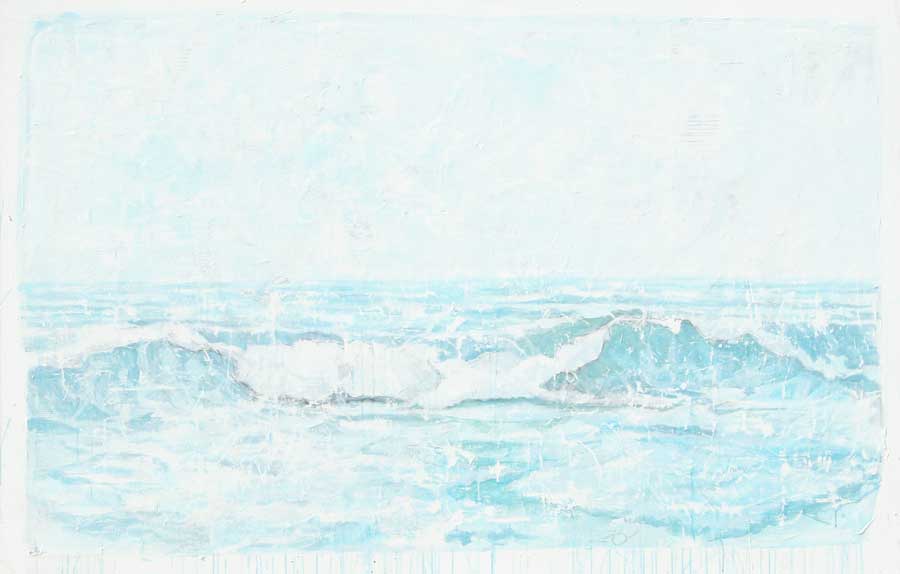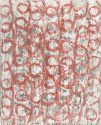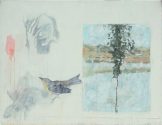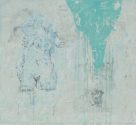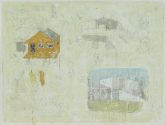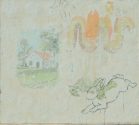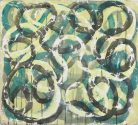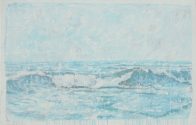Charbonnet takes the title of her exhibition, “The Truth About God,” from a contemporary poem of the same name by Anne Carson whose writings deal with love, life, loss and religion. These subjects are especially pertinent to Charbonnet as she reads news headlines of jihad, geopolitical tensions and violence, and the rise of religious fundamentalism, while living in a devastated city amidst people who now profoundly understand terror, loss, vulnerability, human frailty, the impermanence of the material world and the power of nature, and know how radically life can change overnight.
The “Truth About God” for Charbonnet is that there is not just one truth. The artist found herself working on a new group of abstract paintings with stripes, loops and dots, while simultaneously continuing to work on paintings with more recognizable and iconic images such as birds, trees, hands, kisses, flowers and deer. The imagery in her figurative work is nostalgic and inspired by cultural memory with images taken from old films and paintings. The more recent series of abstract work is also inspired by artwork from the past including the paintings of Albrecht Durer, Piero Della Francesca, Bridget Riley, Louise Bourgeois and Damien Hirst.
“Whether painting images or abstract gestures, my paintings are textural and built up with layers over time. The superimposition of textures, images, collage, words and paint create surfaces that retain or reveal a memory of preexisting stages, resulting in a palimpsest in which some images, shapes or words are obfuscated, while others remain visible however shaped by previous or subsequent gestures and events,” says Charbonnet of her process.
Charbonnet uses stereotypical images of America as a way of exploring our past and present perceptions of ourselves and others, as well as our identity as members of a society and as citizens of a country that now seems to be in transition and in the process of redefining its values, agenda and role in relationships. Painting serves as a metaphor for the phenomenon of recollection. Her process of painting mimics or simulates the process of memory with its numerous layers and textures. Charbonnet introduces into the process images, shapes, colors and compositions taken from our cultural landscape. This results in paintings that both illuminate the past and encourage interpretations which function as starting points in and of themselves.
